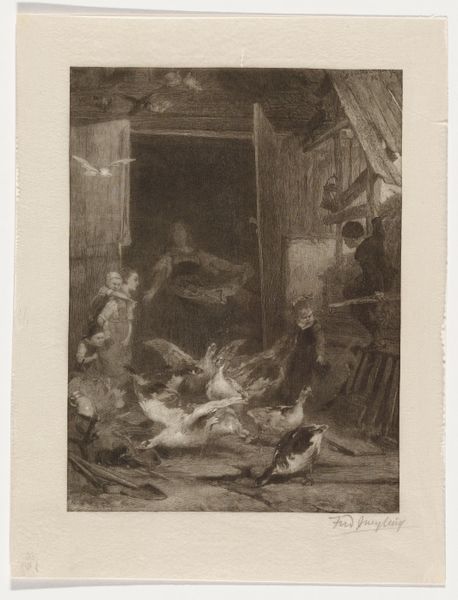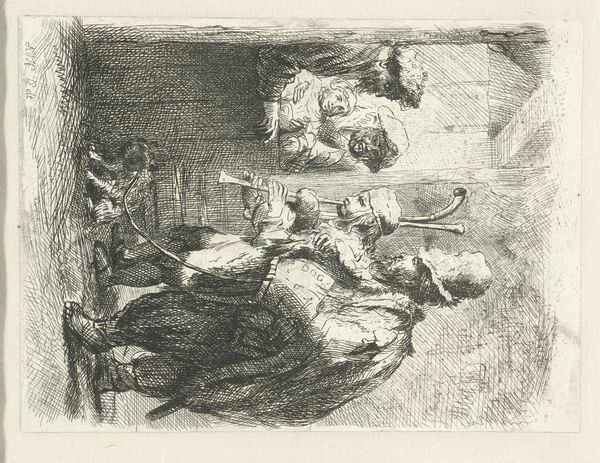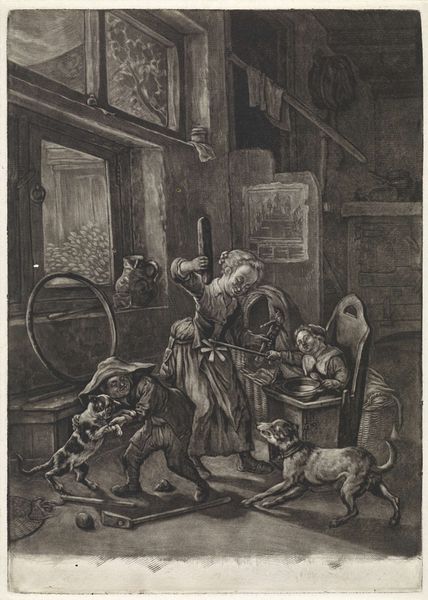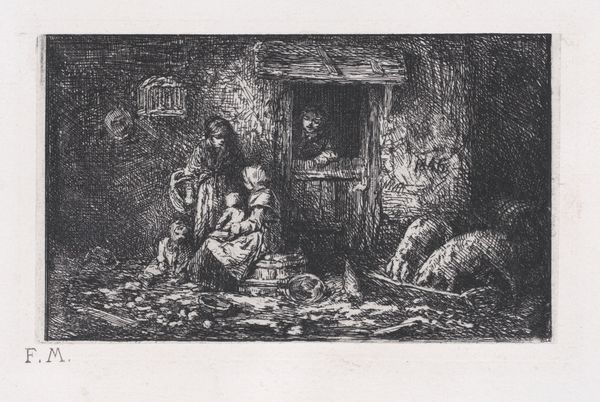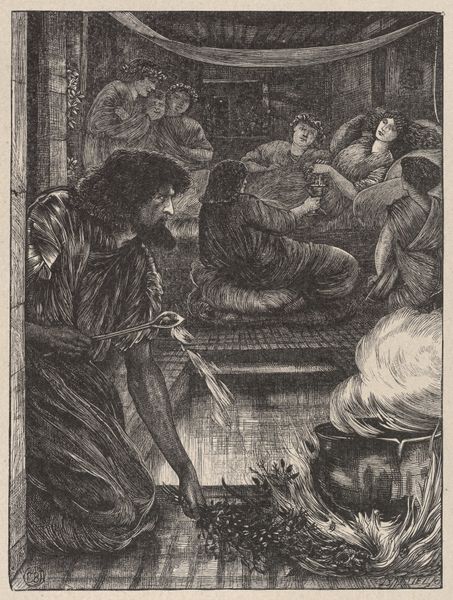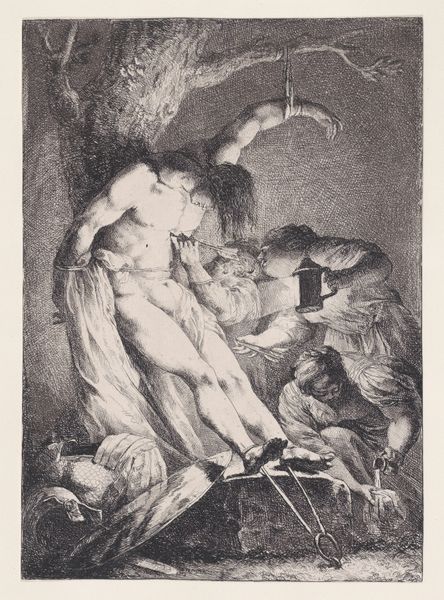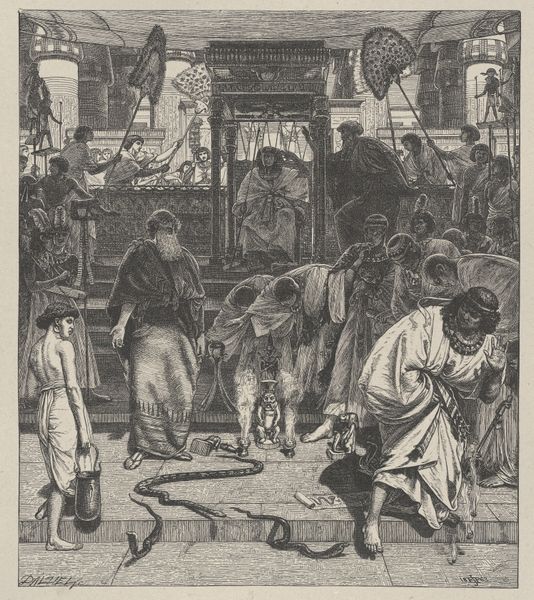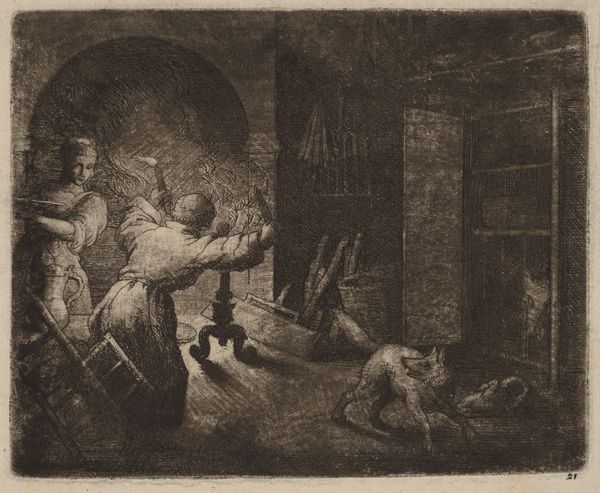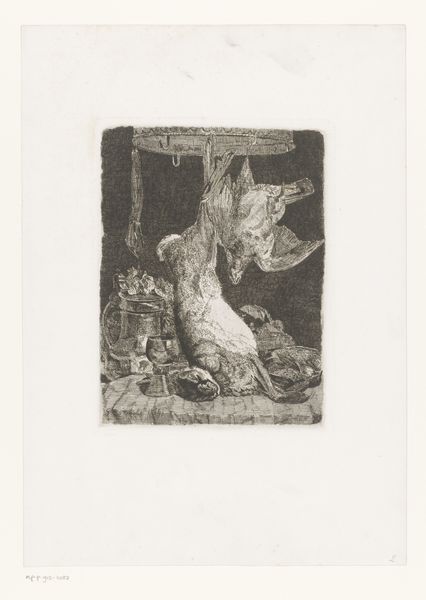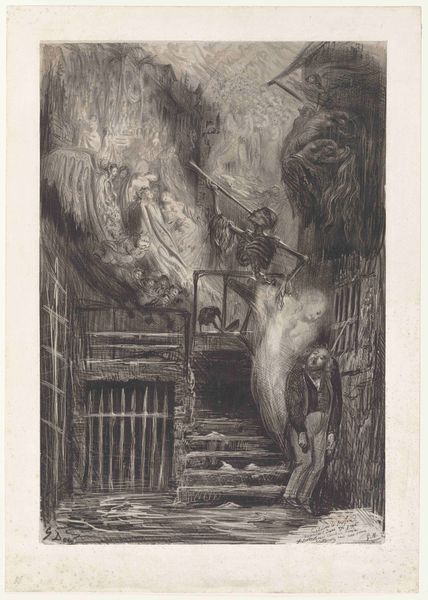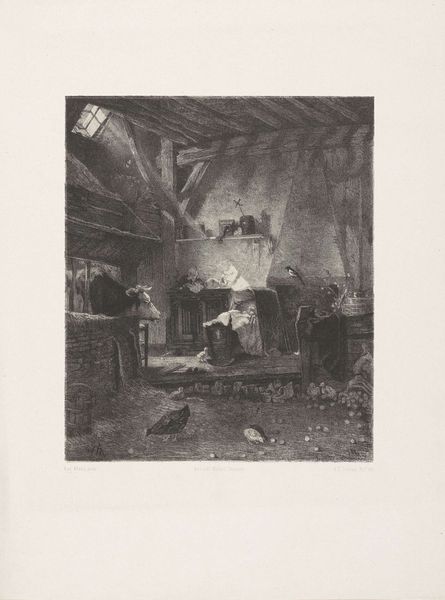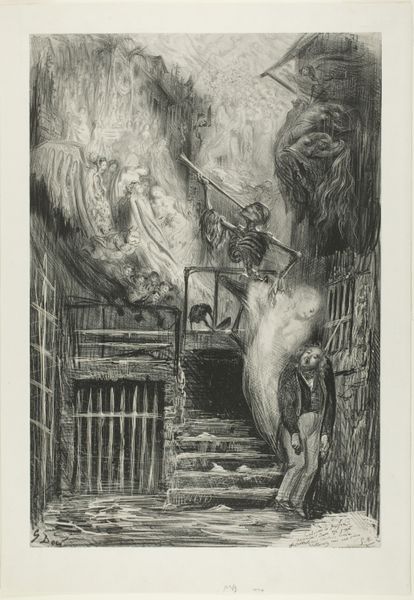
#
pencil drawn
#
light pencil work
# print
#
pencil sketch
#
charcoal drawing
#
charcoal art
#
pencil drawing
#
pencil work
#
tonal art
#
charcoal
#
graphite
Dimensions: image: 252 x 188 mm sheet: 306 x 236 mm
Copyright: National Gallery of Art: CC0 1.0
Curator: This is Frederick Juengling’s "Untitled (Farm Scene)," a print from 1886. What are your initial thoughts? Editor: Well, the scene is immediately arresting, almost chaotic, with the flurry of activity. It feels both domestic and a little claustrophobic. I'm curious about the print medium given the looseness of line. Curator: Absolutely. Juengling, of course, was a master wood engraver. Examining this, you can see the textural variation achieved with charcoal or graphite, mimicking the look of a drawing and its immediacy. Note also that Juengling was a firm advocate of the American system of wood engraving, promoting its artistic potential against what he saw as the more mechanical reproduction methods dominating the field. Editor: That’s interesting. It makes you think about how this piece engages with notions of labour and skill in the late 19th century. How was the reception? It appears to offer a glimpse into a working-class setting. Curator: It was certainly conceived within the context of burgeoning social realism in art. Juengling, associated with circles promoting distinctly American art, depicted scenes of everyday life, giving visibility to the working class. The setting emphasizes their lives, work, and environment rather than glorifying individuals. This print would have been seen as a way to render their lives visible. Editor: The light also creates a sense of drama, illuminating specific areas of the scene and focusing the eye, drawing our attention to those ducks! It emphasizes the texture and tones within the space. There is an intimate feeling about this busy barnyard and interior. What are the signs or historical references that are present here? Curator: Considering its place in late 19th-century art, this work provided a way to legitimize common, “unglamorous” topics, mirroring social shifts and democratization trends that had been rising since the Jacksonian era. Juengling's contribution can be seen through the lens of shifting artistic values—towards democratized representation. Editor: It's striking how such an unassuming medium – a print – captures so much about social change and daily work. It's a testament to the power of art to both reflect and shape its historical context. Curator: Precisely. The emphasis on technique here and material speaks to a larger conversation about the value assigned to different forms of labor, artistic and otherwise.
Comments
No comments
Be the first to comment and join the conversation on the ultimate creative platform.
